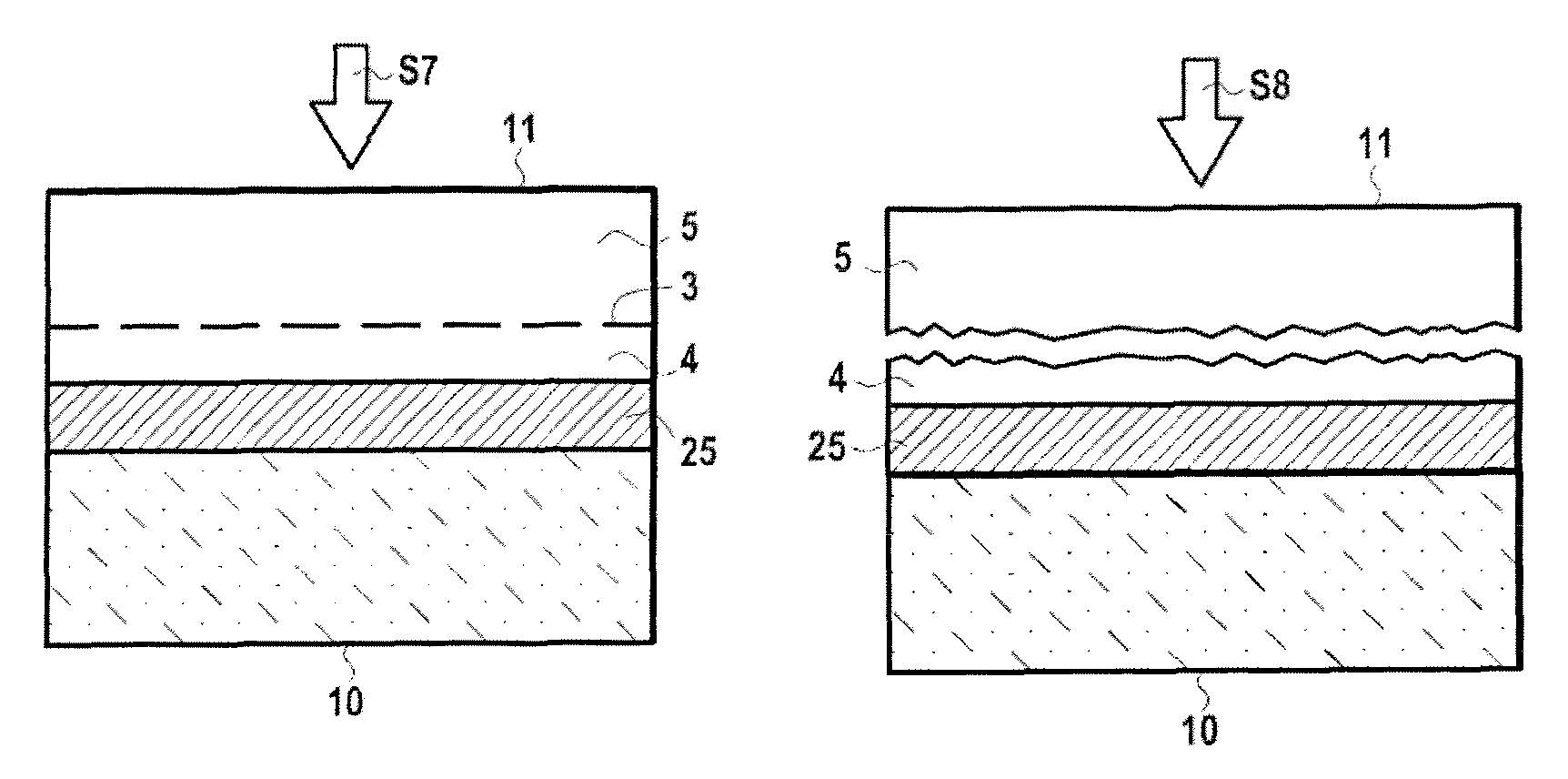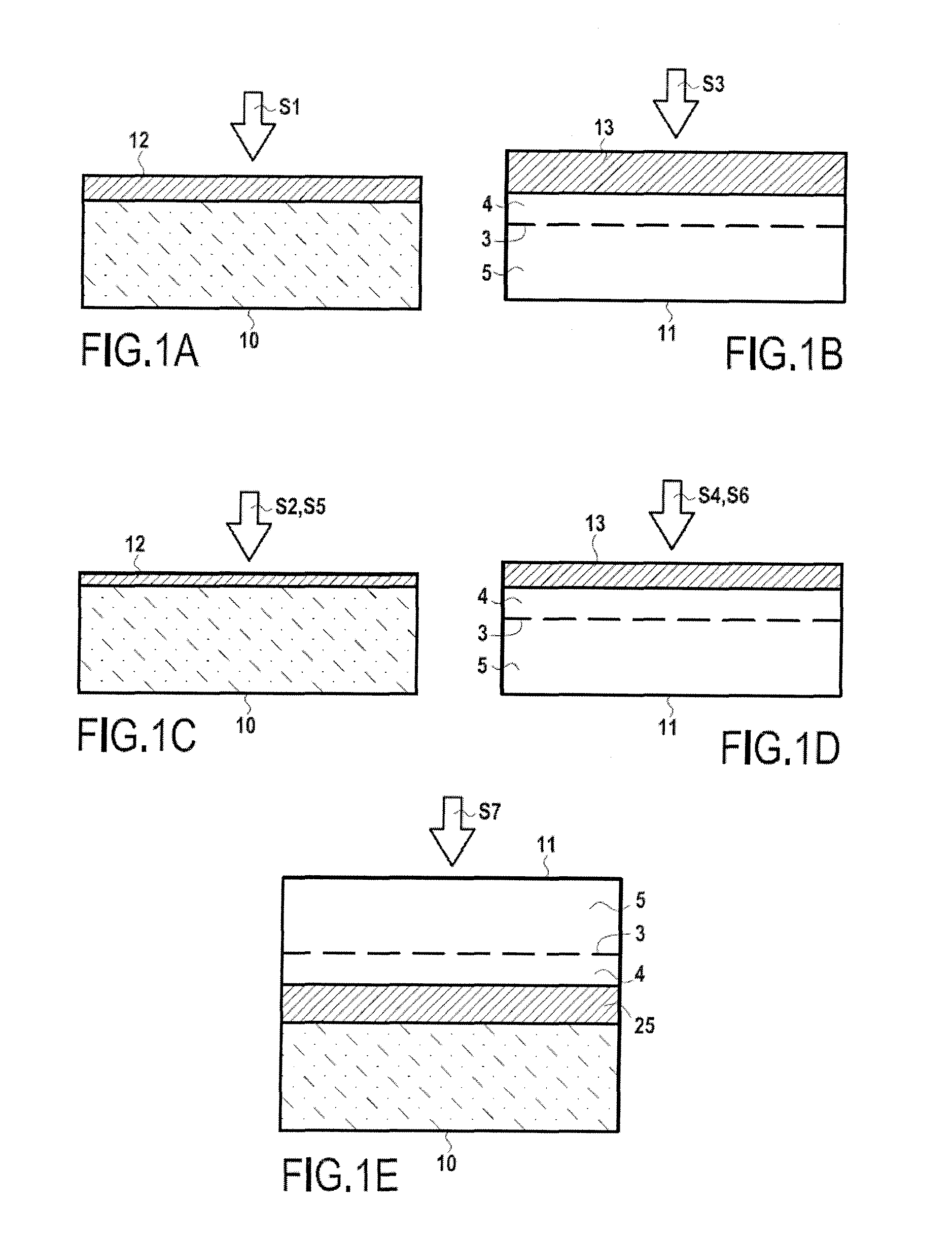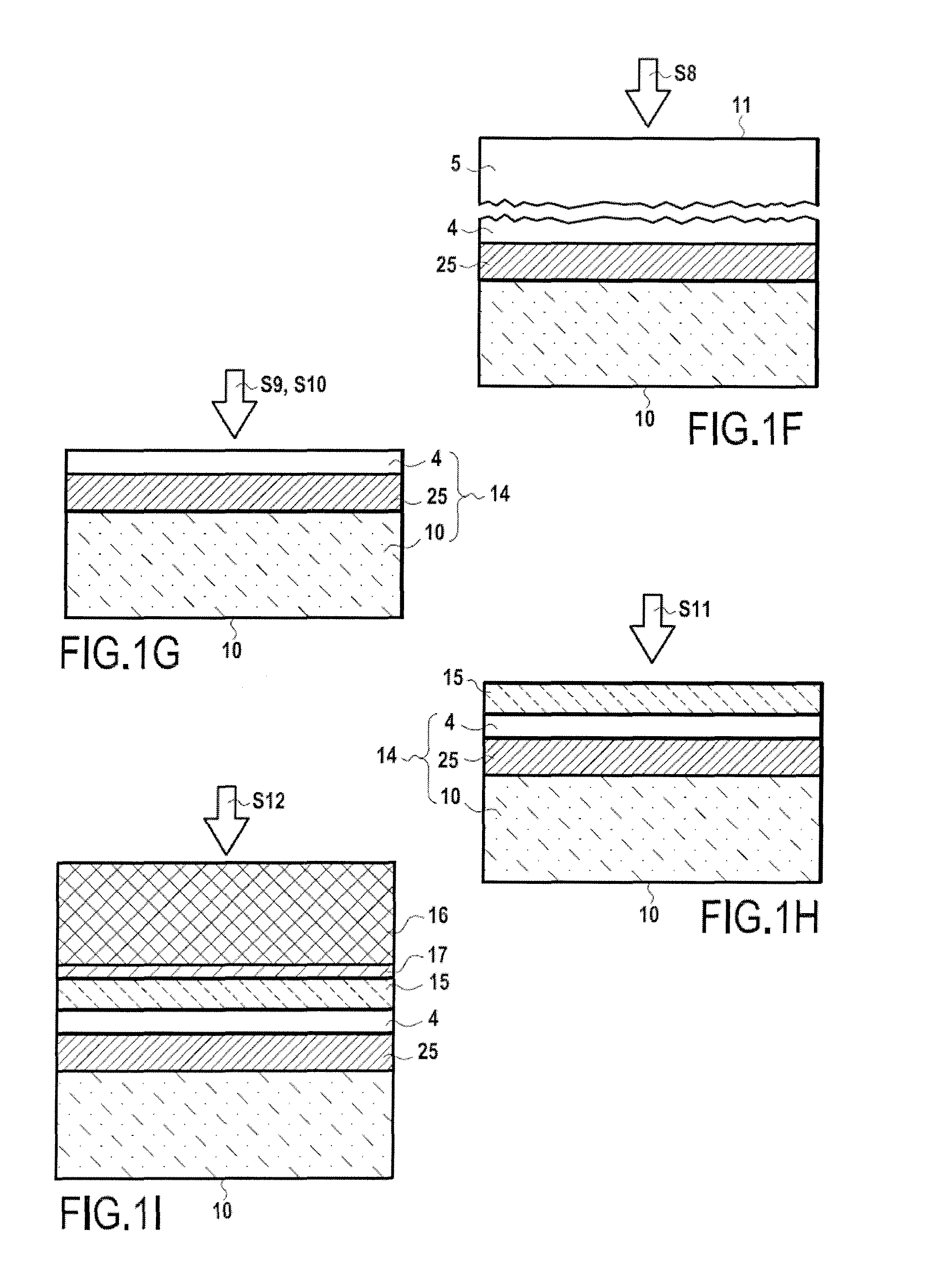Method of fabricating an epitaxially grown layer on a composite structure
a composite structure and epitaxial growth technology, applied in the direction of basic electric elements, electrical apparatus, semiconductor devices, etc., can solve the problems of inability to use structures intended for detachment solutions described in those documents, growth structures that do not have the properties required for optimal use of devices, and stress applied at the bonding layer during high temperature epitaxial growth, and achieve the effect of not easy to creep
- Summary
- Abstract
- Description
- Claims
- Application Information
AI Technical Summary
Benefits of technology
Problems solved by technology
Method used
Image
Examples
Embodiment Construction
[0038]The present invention proposes the production of a composite structure allowing both the formation by epitaxy of layers of type III / N materials of good quality and detachment of the support substrate from the composition structure before or after the end of epitaxy, or substantially at the same time as the end of epitaxy.
[0039]To this end, the invention proposes a novel concept of a composite structure comprising a bonding layer of oxide located between the support substrate and the thin film and in which the formation of microcavities can be controlled. The composite structure of the invention means that microcavities in the bonding layer of oxide can be controlled both as regards preventing their appearance during heat treatments applied to the structure before and during at least a portion of the epitaxy and encouraging their formation or even their development during epitaxy or thereafter with a view to detachment of the support substrate.
[0040]The composite structure comp...
PUM
| Property | Measurement | Unit |
|---|---|---|
| temperature | aaaaa | aaaaa |
| thickness | aaaaa | aaaaa |
| thickness | aaaaa | aaaaa |
Abstract
Description
Claims
Application Information
 Login to view more
Login to view more - R&D Engineer
- R&D Manager
- IP Professional
- Industry Leading Data Capabilities
- Powerful AI technology
- Patent DNA Extraction
Browse by: Latest US Patents, China's latest patents, Technical Efficacy Thesaurus, Application Domain, Technology Topic.
© 2024 PatSnap. All rights reserved.Legal|Privacy policy|Modern Slavery Act Transparency Statement|Sitemap



